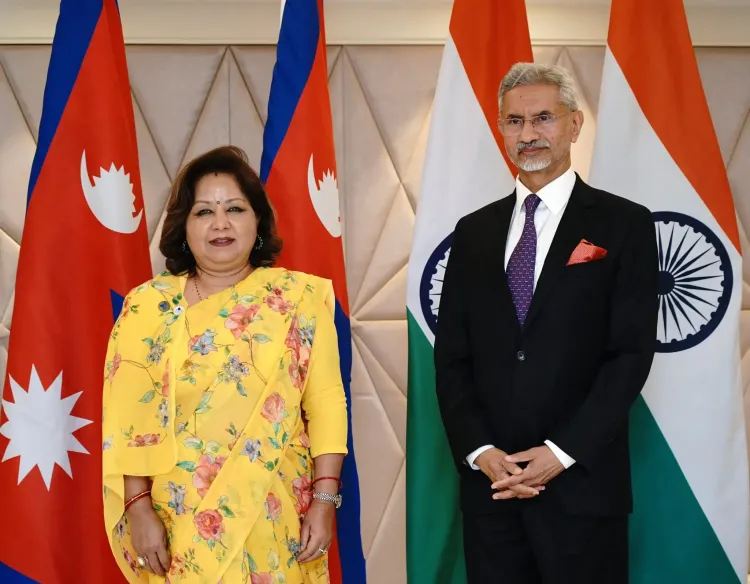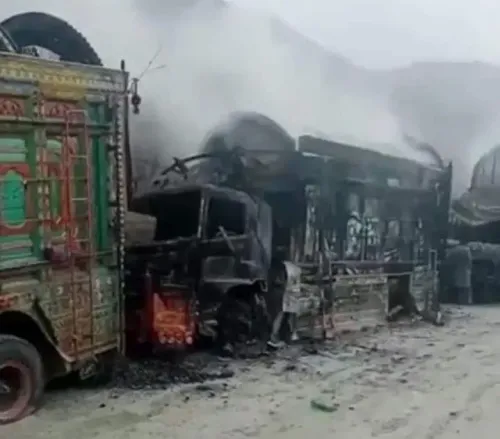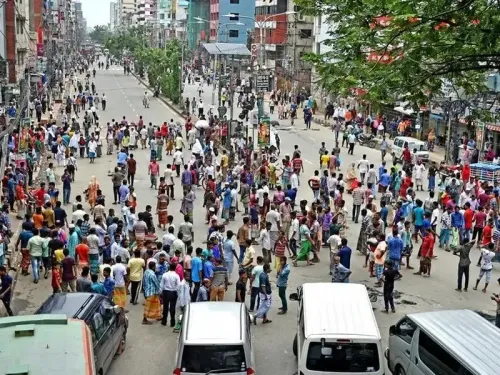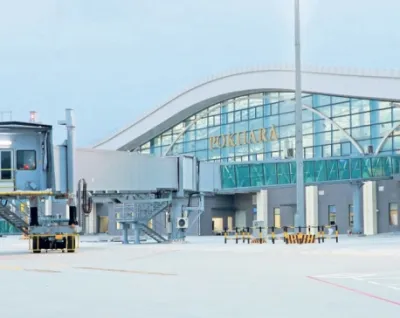Initiatives to Enhance Electricity Supply from India: Nepal's FM

Synopsis
Key Takeaways
- Increased electricity supply from India to Nepal through diplomatic initiatives.
- IEX allows longer daily power draws for Nepal.
- Historic trilateral power transaction initiated from Nepal to Bangladesh.
- Agreement aims for 10,000 MW export of power from Nepal to India.
- Strengthened bilateral cooperation in the power sector.
Kathmandu, March 21 (NationPress) Following her return to Kathmandu after attending the Raisina Dialogue in New Delhi, Nepal's Foreign Minister Arzu Rana Deuba announced on Friday that crucial measures have been implemented to boost the electricity supply from India to Nepal through various diplomatic channels.
"During my recent visit to Delhi, diplomatic efforts were undertaken to enhance the electricity supply from India to Nepal under the existing bilateral agreement and via the IEX (Indian Energy Exchange), permitting longer daily power draws to mitigate Nepal's persistent electricity shortages," Deuba shared on X.
The IEX initiated Cross Border Electricity Trade (CBET) by starting trade with Nepal in its Day Ahead Electricity Market on April 17, 2021. This cross-border electricity initiative aims to extend the Indian power market, fostering an integrated South Asian Power Market. It connects Nepal and other South Asian nations to participate in both the day-ahead and term-ahead markets on the exchange.
During her trip, Deuba met with External Affairs Minister S. Jaishankar to review bilateral relations and discuss ongoing engagements across various sectors. Deuba expressed gratitude for India's 'Neighborhood First' policy, affirming Nepal's ongoing commitment to strengthening ties with India.
India and Nepal share a strong partnership in the power sector. This collaboration received a further boost with the Indian government's notification of procedures to facilitate cross-border electricity trade, enabling the import and export of electricity with Nepal.
In 2022, the then Nepalese Prime Minister Sher Bahadur Deuba praised India's regulations on cross-border electricity trade, which have allowed key partners like Nepal to access India's market and engage in power trading. He also acknowledged India's role in developing Nepal's power sector through capacity building and direct support for infrastructure projects related to generation and transmission.
Last year, EAM S. Jaishankar and the former Nepalese Foreign Affairs Minister N.P. Saud co-chaired the 7th meeting of the India-Nepal Joint Commission, which reviewed the full spectrum of bilateral cooperation, including development partnerships. Following the meeting, several agreements were signed, including one for Long Term Power Trade.
This agreement aims to increase the export of power from Nepal to India to 10,000 MW over the next decade, with necessary measures to promote mutually beneficial investments in Nepal's hydropower generation and transmission infrastructure.
In November 2024, Union Minister for Power Manohar Lal jointly inaugurated the power flow from Nepal to Bangladesh alongside Fouzul Kabir Khan, Advisor, Ministry of Power, Energy and Mineral Resources, Government of Bangladesh, and Dipak Khadka, Minister of Energy, Water Resources and Irrigation, Government of Nepal, through a virtual event hosted by the Ministry of Energy, Water Resources and Irrigation, Government of Nepal.
This historic event marked the first trilateral power transaction conducted through the Indian grid.
The Government of India announced its decision to facilitate this first trilateral power transaction from Nepal to Bangladesh through the Indian grid, exporting up to 40 MW of power during the visit of former Nepal Prime Minister Pushpa Kamal Dahal ‘Prachanda’ to India from May 31 to June 3, 2023. Both parties expressed commitment towards enhanced sub-regional cooperation, particularly in the energy sector, fostering increased economic interlinkages for the mutual benefit of all stakeholders, as per a statement from the Ministry of External Affairs (MEA).
The initiation of power flow from Nepal to Bangladesh through India is anticipated to enhance sub-regional connectivity in the power sector.










